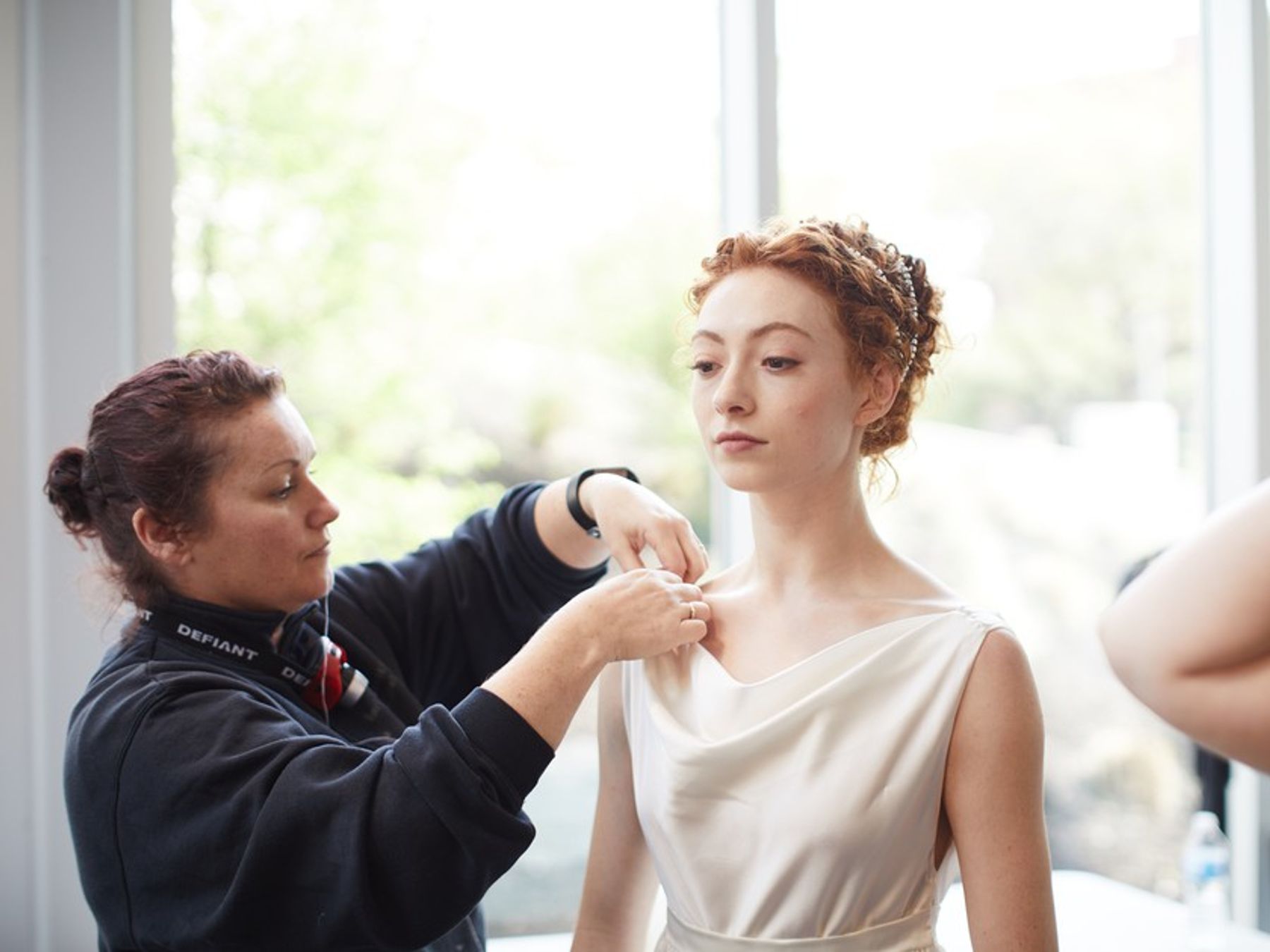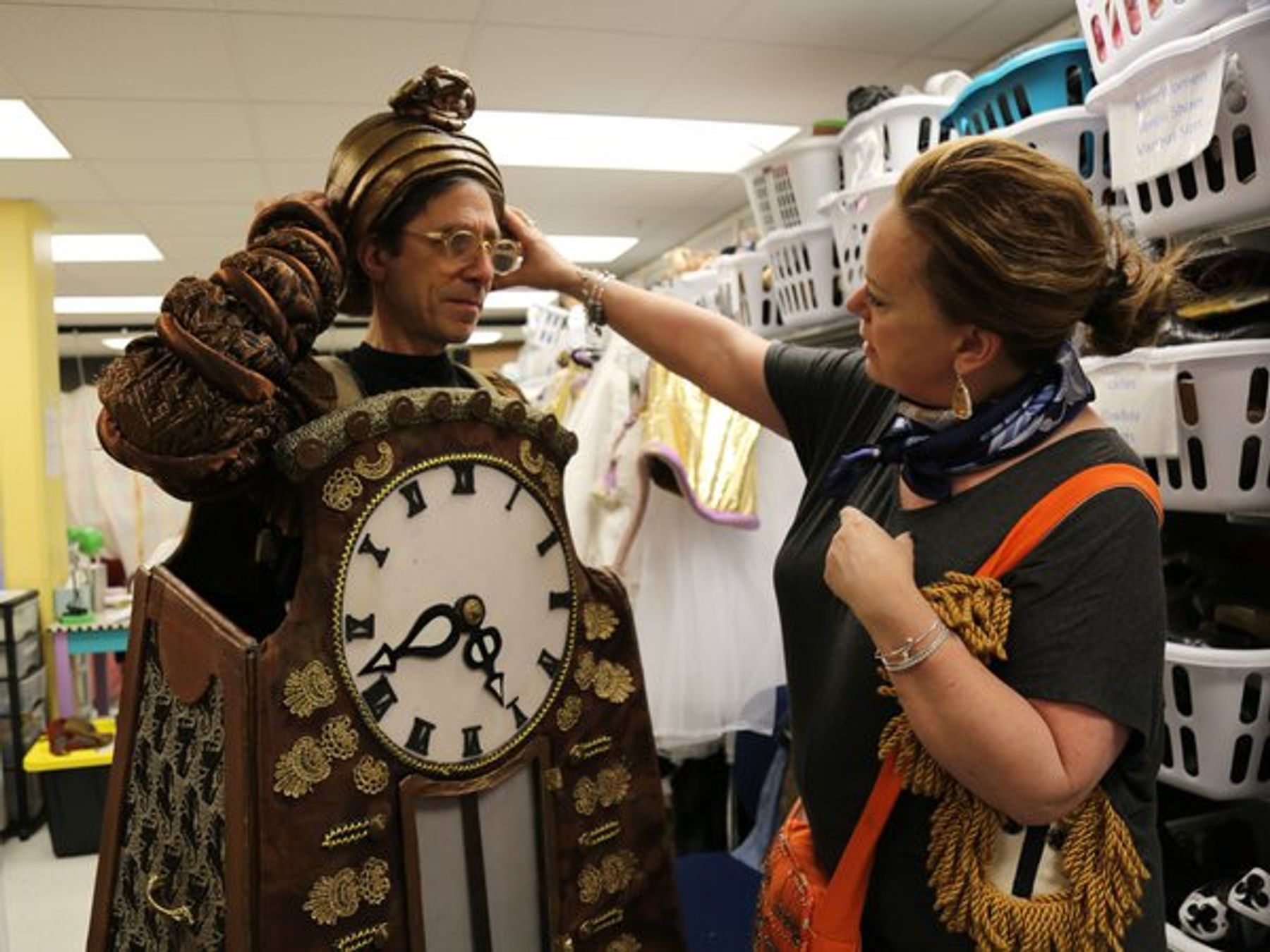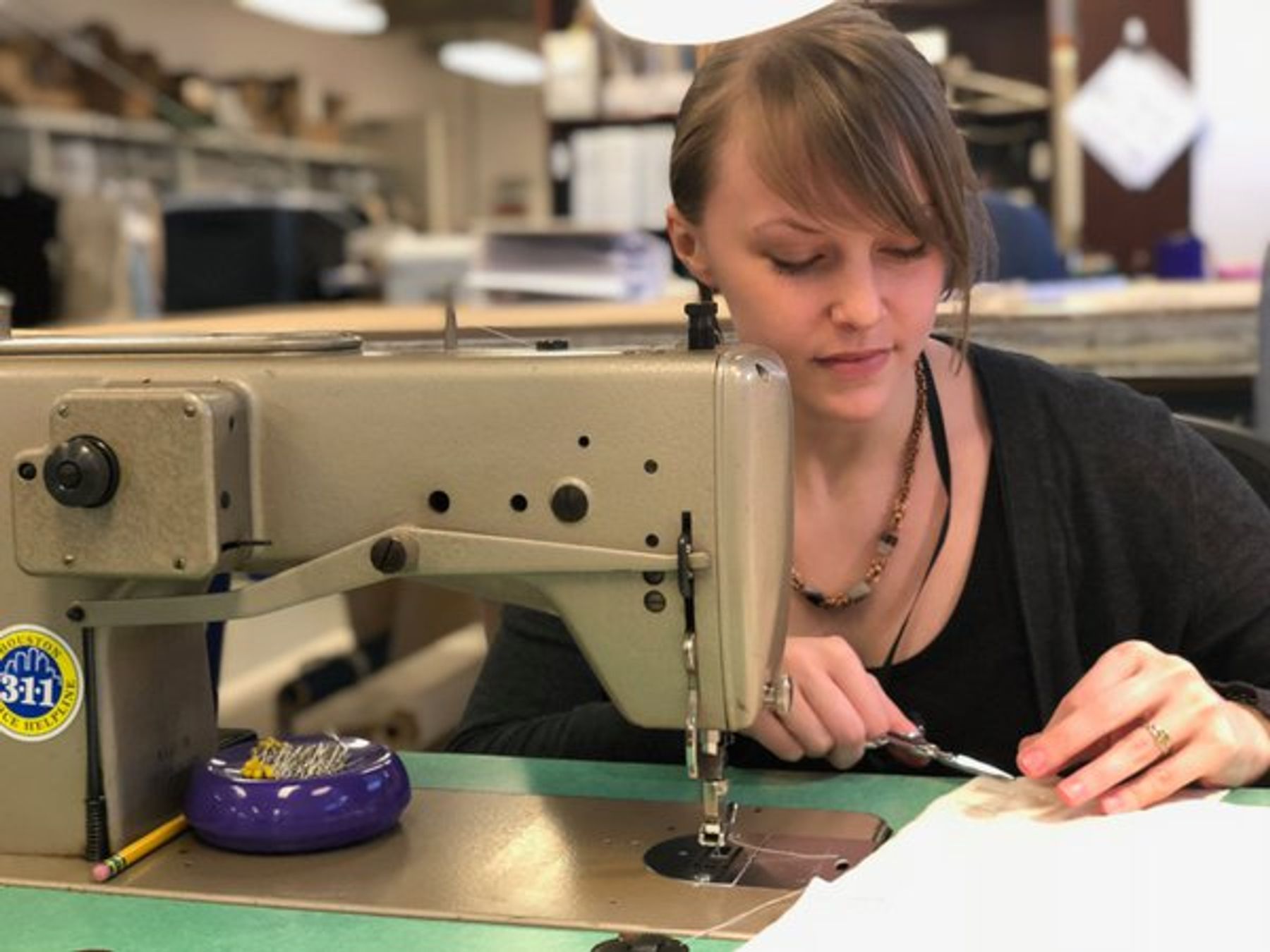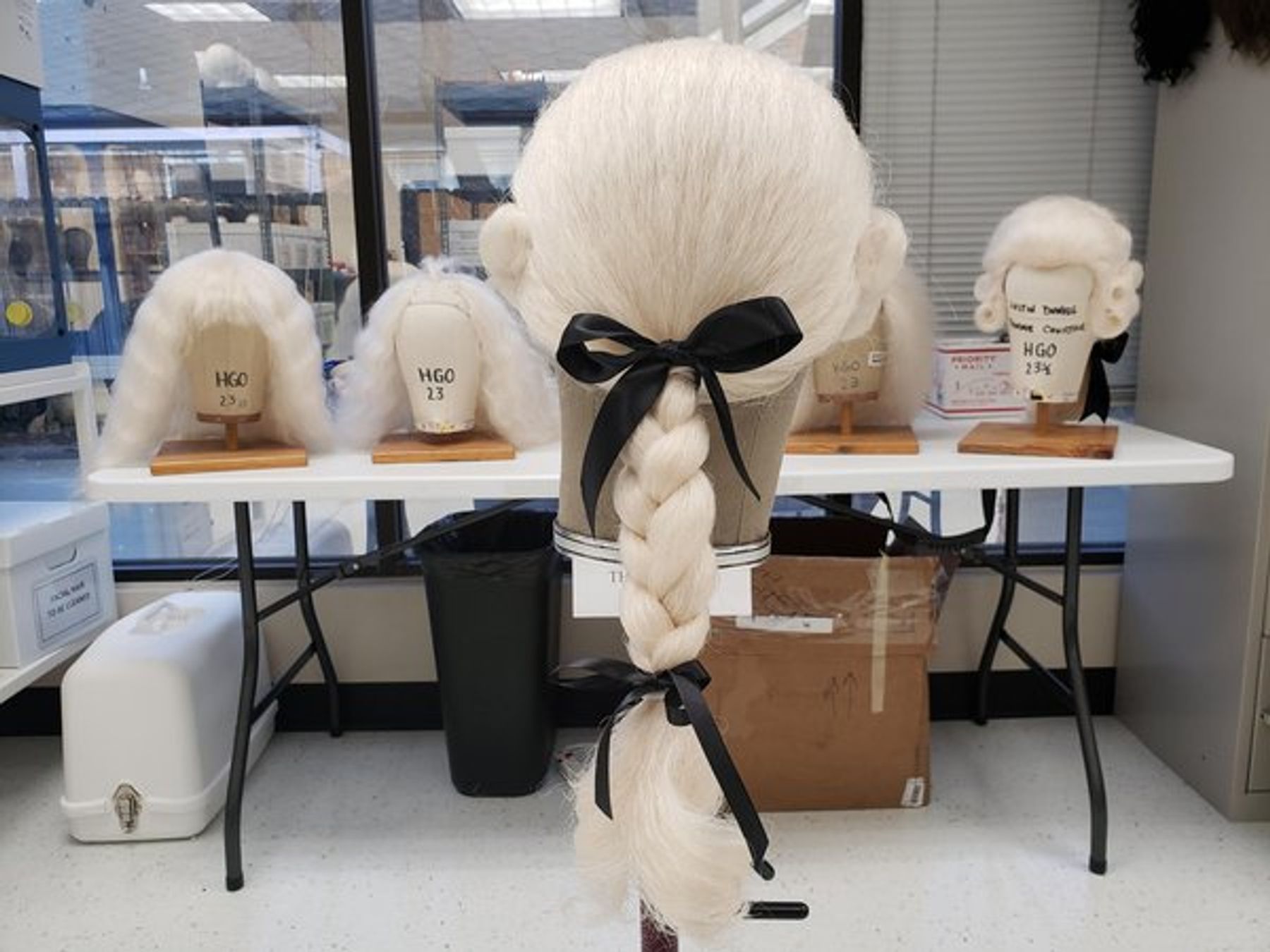Arts & Culture • Entertainment • Theater • Things to Do
Spotlight On Wardrobe Teams
Bringing stories alive through the power of costume design
The 2019-2020 season is underway in the Theater District and no one is more excited than the wardrobe teams for the Alley Theatre, Houston Grand Opera, Houston Ballet and Theater Under The Stars. With Giselle, Rigoletto, The Winter’s Tale and A Chorus line premiering this fall, wardrobe departments are working tirelessly to bring their visions to life – whether it’s intricately detailed tutus, silky fabrics or perfectly stitched buttons. These teams are creating costumes that will leave audiences awestruck.
Getting started
Colleen Grady is the costume shop manager/designer for Theatre Under The Stars. She’s been a part of their wardrobe team for five years and is still thrilled by the challenges every show presents. Grady considers her team a family, relying on everyone, including directors, for honest feedback. “Their input means the most,” she explains. “Before I do anything I have a conversation with the director first to see where their mind might be going in terms of a concept.” This is just part of the process for the beginning stages of wardrobe production, and Grady isn’t alone.
Costume shop manager for Alley Theatre, Nancy Julian, agrees. “It starts with the director and the designers,” she says. “They get together and have discussions about ideas; then the costume designer comes up with choices for all the characters that will exist in the show.” Once the designer comes up with sketches it is Julian’s job to make it happen. Julian has been at the Alley since 2006 and has done a little bit of everything from stitching to draping, to crafts and running wardrobe. As costume shop manager, her main job is to “run the department that provides the clothes.” She understands the different types of fabrics and how they behave on the body. She supervises the shop staff and ensures that the wardrobe is delivered on schedule. With the number of shows the Alley produces each season it’s pivotal that the costume department trusts one another. “I don’t have people second-guessing me and I don’t try to second guess my team,” says Julian. “There’s mutual respect and we listen to each other.”
For the wardrobe team at Houston Ballet, designers start their initial conversation with the director and a choreographer. After the designer comes up with sketches and concepts, he or she presents them to the director and choreographer. Once designs are approved, the entire team comes together to identify things that might be problematic, such as structure and silhouettes. They also discuss proper care for the costumes, budget, and laundry.
Enter Laura Lynch. Lynch is head of costumes for the ballet and she oversees the completion of all costume elements of production, determines the annual budget, and supervises all staff and union crew both at the costume shop and at Wortham Theater. She’s been with the Houston Ballet for 30 years and what she loves most about the ballet are the people she gets to collaborate with and the creative outlet it allows her to have. “I get to come in and do a job that feeds my love to shop fabric,” explains Lynch. “But also the social aspect of team and family, because we are like a family.”
And like any team or family, things don’t always go smoothly.
The Challenges
Working in the world of theater costuming is rewarding but also comes with its share of issues.
“Because what we do is such collaborative work, sometimes the challenge is being at the mercy of other people’s way of working,” explains Grady. “Trying to get everything done in the amount of time we have can be tricky but we always pull it off.” Grady’s ability to work is limited until casting is complete and then there is little more than three works of rehearsal before the show hits the stage. This makes the time frame for getting actors fitted for costumes difficult. If the actors are local, Grady calls them in before rehearsals start – a luxury she doesn’t always have. And it’s not just the actors’ schedules that cause challenges; sometimes there are casting changes that come up as well. Which is why somebody always has to be working two to three projects ahead.
For Houston Grand Opera’s production team, the challenges aren’t just tight deadlines but having to adjust to a new shop space. Norma Cortez, head of costumes, and Dottie Staker, wig & makeup department head, have both been with HGO for more than 10 years. Staker ensures that wigs are in good condition and styled according to costume design specifications. For their production of The Phoenix, Staker created 88 wigs. She notes that wigs are easier to work with than real hair. “I can control the wig better,” Stoker says. “If I’m dealing with a lot of people, it’s easier for me to go down the row and put on a bunch of wigs.”
As head of costumes, it’s important to Cortez that the designer’s vision makes it to the stage. With a new production planning typically starts a year in advance but that schedule has been hard to follow since 2017. “Because of everything with Harvey, moving to the new space, plus all of the productions we put on, time keeps running and there’s no way to stop it.” says Cortez. Cortez and Staker work closely together to ensure both have what they need to stay on top of things. “Opening night, that curtain goes up and everything had better be ready,” explains Staker. “We can’t tell 2,000 people ‘sorry, we’re not quite ready. Can we postpone?’”
Once deadlines are set for a production team there’s very little room for excuses. A majority of the time they’re juggling numerous projects at once so they won’t fall behind on the start of a next project. “You have to be going on to the next project while you’ve still got three in the shop,” says Julian. “It doesn’t end and you always have to be moving forward.”
With the amount of time that goes into production, these teams are working long hours. Putting in 70, 80, even 90 hours a week to make sure everything runs smoothly and that costumes look perfect when they hit the stage. “Trying to have a good work/life balance can be hard,” explains Lynch. “You can easily work a hundred hour week and have no life.”
Mission accomplished!
Seeing costumes on stage never gets old for these teams. Season after season they still get overcome with joy when the curtains are drawn, and the spotlight hits their design. “Seeing your stuff onstage and then having the lights come on and hearing the audience gasp, oh my God, that’s fabulous!” explains Julian.
The production industry has a tendency to burn people out. You can be the first to arrive and the last to leave and at some point, it becomes tough trying to balance both. But the reward at the end is what makes it all worth it. From the long hours, last-minute changes, to the crushing deadlines, when you see the result you can finally exhale and say it was all worth it.
“I always think ‘wow, these people have no idea what everybody just went through to get this on the stage,’” says Grady. “And then I think that means we did our job.”
For a calendar of all the theater performances please visit www.downtownhouston.org/district/theater/



